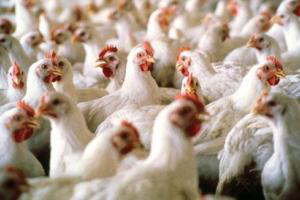Multi enzyme system for poultry and pigs

Optimising dietary fibre, maximising energy and protein utilisation must ensure a healthy gastrointestinal micro flora termed as ‘Eubiosis’; lactic acid-producing bacteria are promoted whilst suppressing the pathogenic bacteria. This may be achieved with the judicious use of multi enzyme systems.
Indeed, dietary fibre may have a beneficial effect upon the health of poultry and pigs by acting as a substrate for the intestinal micro flora. This is a basic part of the digestive system and assures an important supply of nutrients. The short chain fatty acids, predominantly acetic, lactic and butyric acid that are produced, decrease the pH in the large intestines and this leads to a better microbial control.
When formulating feeds with high inclusions of plant proteins, we must consider possible Anti-Nutritional Factors (ANF’s) as well as the Non Available Carbohydrates (NAC) which comprise Non-Starch Polysaccharides (NSP’s) and Non Digestible Oligosaccharides (NDO’s). The various sources of NAC can be broken down by supplementary enzymes and this will improve the feed transit and reduce microbial growth in the small intestines. Those carbohydrates will eventually enter the large intestine as NDO’s where they will be fermented into various organic acids and probably some amino acids. Fibre degrading enzymes may play a very important role in modulating this microbial fermentation when high fibre and vegetable-based feeds are used. That is why fibre levels in feed must no longer be seen as a maximum constraint in feed formulations. ‘Optimising fibre’ becomes the new challenge in modern animal nutrition.
Enzyme products based on xylanase and β-glucanase, frequently also containing cellulase are known to improve litter conditions, particularly with wheat- and barley-based feeds.
Maize diets are highly digestible, however, maize starch is made up of amylose and amylopectin, the first being poorly digestible. Normal starch (70% amylopectin / 30% amylose) is better digested than high-amylose starch (70% amylose). It has become interesting to supplement maize-based diets with α-amylase, an enzyme also produced by animals but at too low levels in young animals, such as piglets and broilers.
Legume seeds such as soybean, peas, beans and lupines contain important amounts of the β-galactosides, raffinose, stachyose and verbascose, and β-mannans that may affect nutrient absorption. These oligosaccharides appear to be indigestible in the stomach and the small intestine. However, bacteria in the lower intestinal tract are able to metabolise these sugars to CO2, H2 and CH4 provoking digestive disorders. Further research has shown the impact on zootechnical performances and the cost-effectiveness of breaking down these oligosaccharides with enzymes such as α-galactosidase and β-mannanase.
Other alternative protein sources are now becoming of increasing interest as well: rapeseed and rapeseed meal, sunflower meal, cottonseed meal and more exotic ingredients such as palm kernel meal and copra meal. The NSP’s in pulses and oilseeds are mainly pectic polysaccharides. Multi-activity enzymes including pectinase targeting the pectic polymers are of great interest.
It may be assumed as well that exogenous protease enzymes solubilise proteins and increase the protein availability, especially when it comes to vegetable protein sources. This is utmost important for young animals, broilers and piglets, that do not produce sufficiently this enzyme.
Given the many biochemical processes involved in nutrient digestion, it is likely that a multiple enzyme system would play a greater role in digestion, particularly in energy and protein utilisation. More energy may be released from the feed resulting in an energy sparing effect and more proteins may become available, resulting in an amino acid sparing effect. Both can be attributed to the digestive enzymes and can be used in least cost feed formulations. Such a novel multi enzyme system, Fra Multizyme – a product of E-line, is now brought to the market by Framelco containing all these 8 enzyme activities. They are produced by different micro-organisms, fungi and bacteria, are heat resistant by nature and have their optimal activities in a wide pH range.









